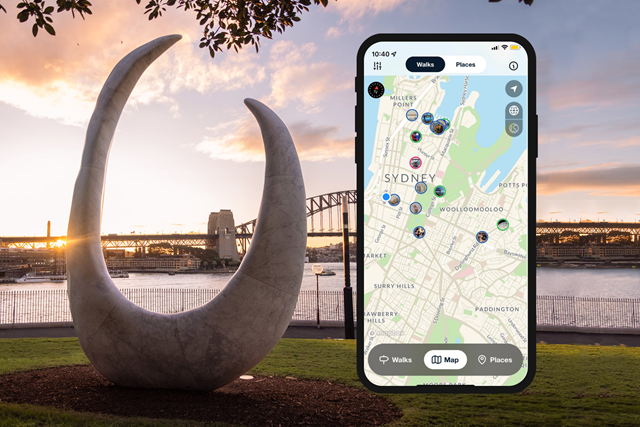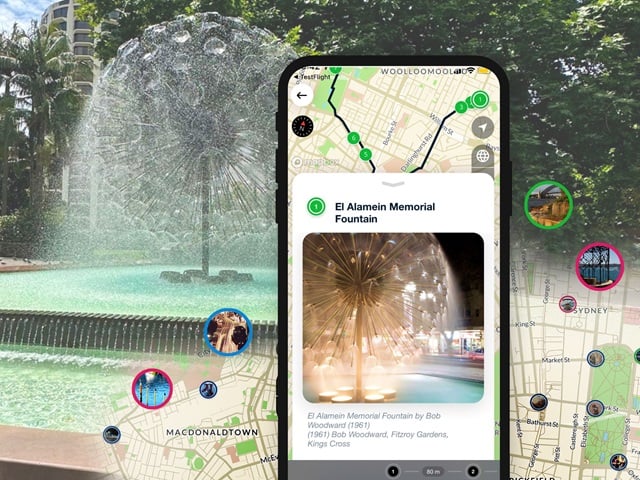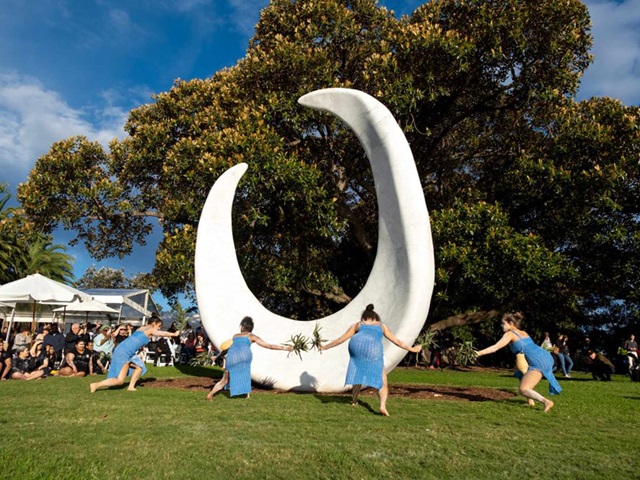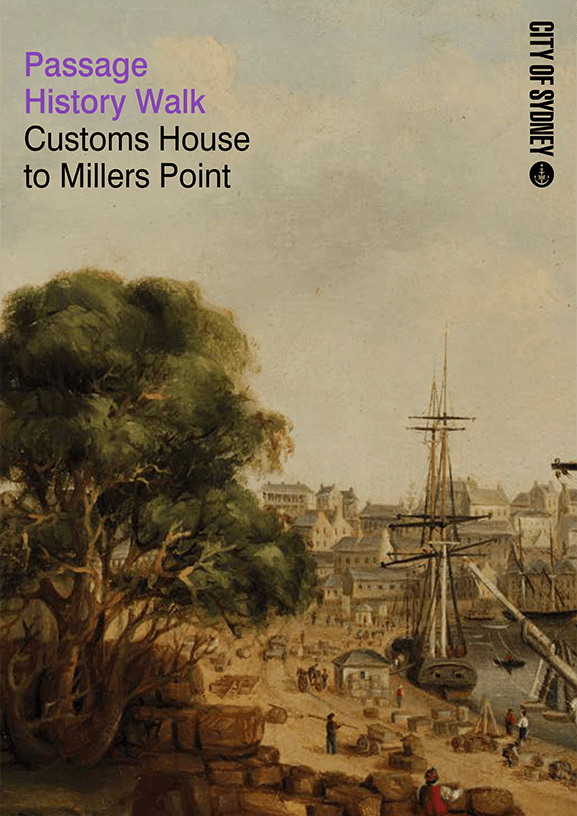Yananurala – Walking on Country
Yananurala extends the Eora Journey’s recognition of Aboriginal people, their history and culture along 9km of foreshore, from Pirrama (Pyrmont) to Wallamool (Woolloomooloo Bay).

– Emily McDaniel, curator
Yananurala combines 2 Gadigal words, yana (walk) and nura (Country). The ‘la’ adds an instruction, encouraging people to go walking on Country.
The phrase ‘Yanala ngarala gadinurada. Yururala, yana yuramirung’ invites you to experience Gadigal Country through all your senses – ‘Walk, think, listen, hear on Gadi Country. Feel it strongly, walk with us.’
Yananurala extends the Eora Journey’s recognition of Aboriginal people, their history and culture across Sydney’s harbour foreshore, from Pirrama (Pyrmont) to Wallamool (Woolloomooloo Bay).

Find Yananurala on Sydney Culture Walks
Future Yananurala projects
- Sitelines and Conversations – a combined project highlighting the relationship between sites of historical and cultural significance and the intimate, hidden histories of the harbour
- Badu (water) – an environmental project led by an artist in partnership with universities and marine institutes to build on research acknowledging Country as land, water and sky
- Pirrama (Pyrmont) – a public artwork next to the Australian Maritime Museum to recognise the connection between Aboriginal people and the harbour
- The Hungry Mile – a major public art and interpretation project recognising Aboriginal people’s role in shaping Sydney’s maritime history
- Tara (Dawes Point) – a major public art project that highlights the site where Patyegarang gifted the language of her people to William Dawes, recording it for future generations in his notebooks
- The Boatshed – a public art project linking Aboriginal history associated with the Government Boatshed to the resilience of Aboriginal communities in Sydney
- Woolloomooloo – a community-based public art project that recognises the history and enduring presence and culture of Aboriginal people



Project partners
Yananurala is part of the Eora Journey and is being developed in partnership with the Metropolitan Local Aboriginal Land Council, NSW Government project partners, cultural institutions and Aboriginal and Torres Strait Islander communities, with guidance from our Aboriginal and Torres Strait Islander Advisory Panel.



